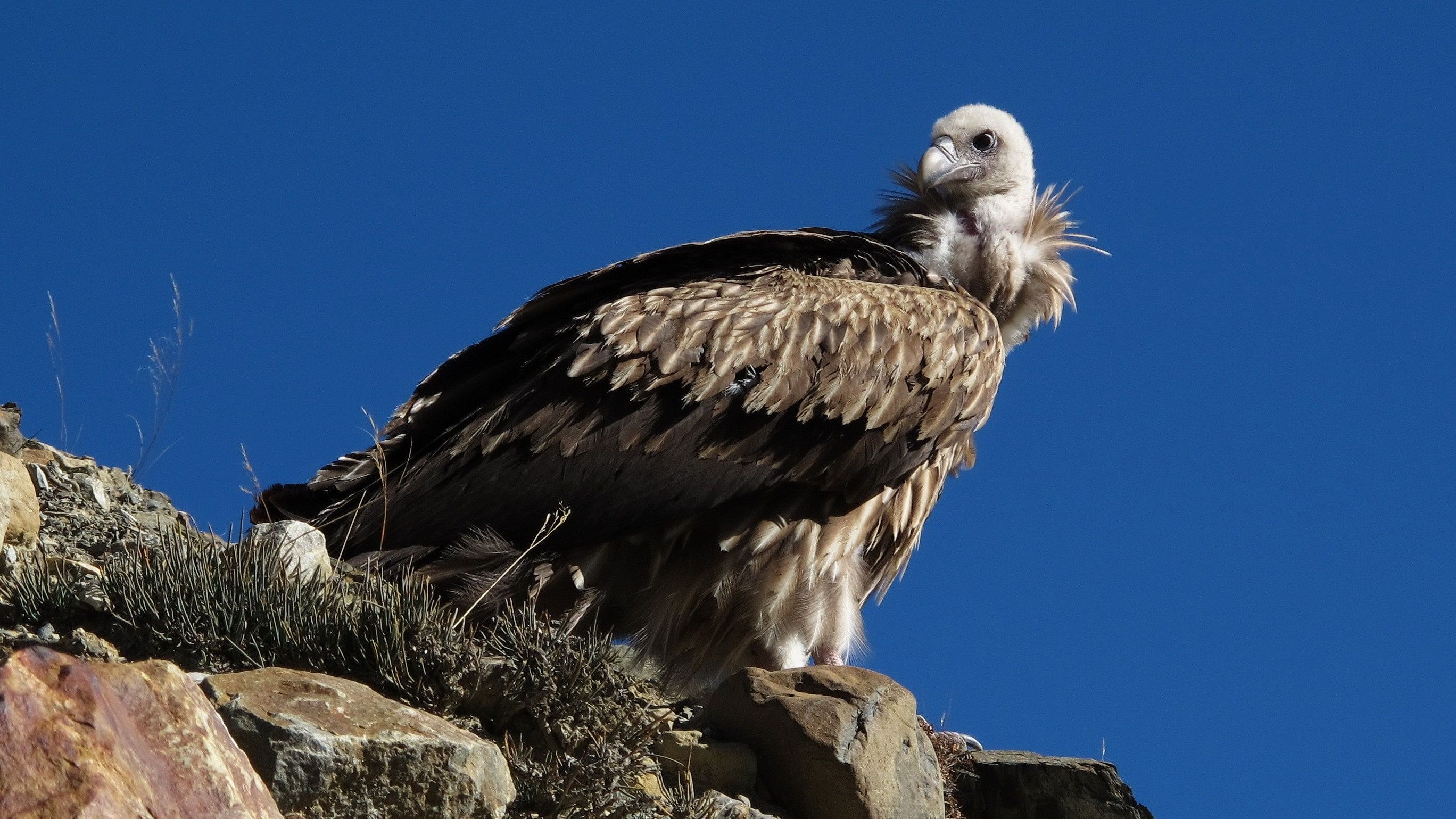
A white-rumped vulture.
Credit: iStock Photo
It was a carefully thought out strategy that forest officials followed when they released ten vultures bred at a conservation centre into the Tadoba Andhari tiger reserve earlier this year. A repeat happened earlier this month when another ten captive vultures were brought to an aviary in Pench to be released in the tiger habitat after a few months.
In both cases, the idea was to keep the birds away from the carcass of domestic livestock because of the abuse of four veterinary drugs that are toxic to vultures.
India banned one of the four, diclofenac, for veterinary use in 2006. Still, cattle and goat owners continued to use the medicine outside the law for several years until the government stopped manufacturing larger injectable vials.
Veterinary use of two other medicines—aceclofenac and ketoprofen – was banned last year, and a central government expert panel in January recommended prohibiting the veterinary use of nimesulide even though an official order is yet to come.
While the 2006 ban arrested the rapid decline of the vulture population in India, experts are now worried about the absence of any significant rise in their population and suspect continuous poisoning by these NSAIDs (non-steroidal anti-inflammatory drugs).
“The government and the Bombay Natural History Society are proceeding with releases to the wild of a large proportion of the captive-bred vultures in the breeding centres set up by BNHS in 2004. The captive populations are a vital safeguard against the continuing effects of NSAID poisoning,” Rhys Green, a scientist at the University of Cambridge associated with vulture conservation work, told DH.
“They have suggested that the vultures will be safe because they will be released in tiger reserves where NSAIDs are not used, but all published studies indicate that vultures range widely outside parks and sanctuaries and that dead cattle comprise a very large proportion of their food,” he cautioned.
Partnering with conservation scientists from the UK, India, Pakistan, Nepal, Saudi Arabia, and Spain, Green analysed the existing policies in South Asia and Europe to determine the threats to nature’s best-known scavengers.
The study published in Ecological Solutions and Evidence flags gap areas. “Vulture populations in India are no longer declining rapidly, but neither do they show signs of recovery,” Green said.
Nine species of vultures are recorded from India, of which five belong to the genus Gyps. Three Gyps vultures — Oriental White-backed Vulture, Long Billed Vulture and Slender Billed Vulture are residents, and the remaining two, i.e. Eurasian Griffon and Himalayan Griffon, are largely wintering species and a small population breeds in the Himalayas.
The decline of vulture populations in India was first recorded at the Keoladeo Ghana National Park, Rajasthan, between the 1980s and mid-1990s, followed by northern India road counts. According to the BNHS, which conducted nationwide raptor surveys between 1991 and 93 and repeated the same in 2000, the population of Oriental White-backed Vultures and Long-billed Vultures declined by more than 92 per cent between 1991 and 2000.
By 2007, the population of Oriental White-backed Vultures and Long-billed Vultures had declined by an astonishing 99.9 per cent. The single biggest reason was the veterinary use of diclofenac on cows, sheep, goats, pigs, and deer. A similar decline was also reported in Bangladesh, Nepal, and Pakistan.
South Asian governments decided to ban diclofenac in 2006 and, six years later, coordinated its implementation through an intergovernmental agreement. Within three years of the ban, the death rate per meal from diclofenac poisoning of white-rumped vultures in India declined by 65 per cent.
However, exposure to diclofenac was still so high in 2009 that carcasses of 72 per cent of white-rumped vultures found dead in the wild in India were contaminated with diclofenac. Undercover surveys have shown illegal diclofenac sale for veterinary purposes besides the use of three other NSAIDs, which are equally poisonous to them.
“Diclofenac use was banned in India, Pakistan and Nepal 18 years ago and 14 years ago in Bangladesh, but undercover surveys of dispensing of diclofenac for veterinary use by pharmacies show that illegal dispensing is common in some Indian states,” the scientists reported in the journal.
For over a decade, conservationists have also pointed out a rise in the veterinary use of aceclofenac, ketoprofen, and nimesulide, which contribute as badly to the birds’ deaths as diclofenac. In 2022, they approached the Delhi High Court seeking a ban on the three NSAIDs. A year later, India became the second country to announce a ban on veterinary aceclofenac and ketoprofen after Bangladesh, which prohibited ketoprofen’s veterinary use in 2021.
In January, the Drug Technical Advisory Board (DTAB)—India’s highest technical advisory body on medicine—agreed to recommend a ban on veterinary use of nimesulide, citing the drug’s risk to the vulture population. The ban covers the manufacture, distribution, and sale of the drug and the production of larger vials to prevent any misuse.
According to the minutes of the DTAB meeting, the board also recommended issuing appropriate instructions to the manufacturers of aceclofenac, ketoprofen, and nimesulide to destroy the existing stock of drugs meant for veterinary use. However, the final government order on nimesulide is yet to come after six months, and it is not clear whether the drugmakers have destroyed their stocks.
Is there a need to test the safety of new NSAIDs on vultures before they are rolled out? This is one of the prayers before the Delhi High Court. Conservationists argue in favour of such a safety net for vultures.
“The devastating effects of some pesticides on birds of prey and fish-eating birds caused several countries to require evidence from manufacturers of the safety of pesticides to wildlife before the authorities approved their use. No country with wild vulture populations has yet implemented a similar approach for veterinary NSAIDs,” Green added.
